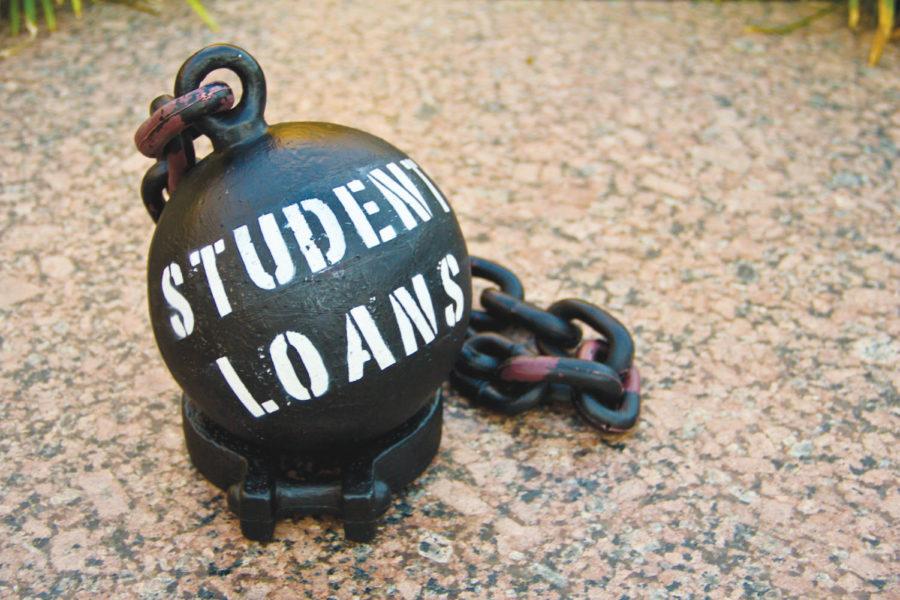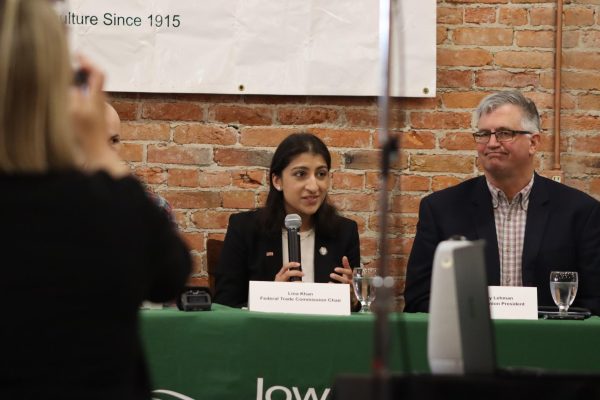Student Loan Forgiveness program open for applications
University students throughout Iowa can apply for debt relief through the Student Loan Forgiveness program, which was instituted in October. However, a federal judge in Texas ruled the program unlawful, causing it to be postponed.
According to the Department of Education’s income data, eight million borrowers’ student loan debt will be forgiven.
Roberta Johnson, the executive director of student financial aid, explained the details of the total forgiveness and one-time forgiveness plans for students.
President Biden announced the program in August, and the U.S. Department of Education officially put out the application for the program Oct. 17, Johnson said. The application allows students to complete and submit the application form to request debt forgiveness.
“There’s two components to it: For most students, if they did not have a Pell Grant while they were in college, they can receive up to a maximum of $10,000 worth of debt relief,” Johnson said. “For students who were recipients of a Pell Grant, they could get up to $20,000 of debt relief.”
Johnson said it does not matter the length of time that the Pell Grant was present during the student’s years in school. It will still apply to the amount received in loan forgiveness.
She recommends that students go to the debt relief page at financialaid.iastate.edu and utilize the links to obtain the application form and more information about the program.
The deadline to submit applications is Dec. 31, 2023. Relief payments should be processed within about six weeks. Therefore, applicants should apply as soon as possible, by November 2023 at the latest, to avoid student loan repayments resuming.
“If students are currently graduated already and working, there are some income limits in terms of what would qualify,” Johnson said.
If students have any hesitancy or questions regarding qualifications, Johnson encourages everyone to apply anyway, as the Department of Education will inform applicants of their status.
Keenan Jacobs, a sophomore majoring in computer science, said while he hasn’t taken out loans, he is aware of and in favor of greater support for student loan forgiveness.
“I absolutely support more student debt relief and funding,” Jacobs said. “My only concern would be where the money would come from to help pay for it.”
Jacobs expressed his concerns for his peers and the provocation he has experienced to take out student loans.
“A lot of students, including most of my peers, were pressured into taking out loans to help pay for the, honestly absurd, tuition for college, and I think that this student debt relief would be an amazing thing for students to help pay their debt,” Jacobs said.
Iowa State Senator Herman Quirmbach commented on the program’s costs and benefits for students. He believes the Department of Education received 26 million applications for the Student Loan Forgiveness Program.
“The qualifications or the eligibility, rather, is limited by personal or family income that is on the borrower for a single individual; you’re eligible if your annual income is under $125,000 or $250,000 for a couple,” Quirmbach said.
Quirmbach said taking out a loan incurs an obligation to pay it back. $10,000 only represents a portion of the average student loan debt at graduation, which is about $28,000. The debt is being reduced, so students graduating are not in quite as poor of a financial position.
“Going to school, you’re making an investment in yourself and your skills and your knowledge, and that has a payoff long-term,” Quirmbach said. “Having a college degree on average significantly increases your earning power, and it is not inappropriate to borrow some money to make that investment, even if you have to borrow some money to do it and it pays off in the long term.”
Quirmbach said the state of Iowa is partly at fault for the need for students to borrow money, due to their failure to support public universities.
He said that student loan burdens are causing many recent graduates to delay buying homes, put off starting families, and even leave Iowa to pursue higher-paying jobs in other states.
Iowa State economics Professor John Winters expressed his opinions on the debt relief program in an email response.
“Debt relief supporters have provided very weak answers to the fundamental question of how this solves problems,” Winters said.
He expressed his hesitancy toward providing student debt relief to students and the impact it will have on the incentive to pay back loans.
“The public service student debt forgiveness aspect will likely create very bad incentives and lead to huge costs,” Winters said.
Winters said the policy would be more cost-effective if it targeted lower-income borrowers. He said he would be more supportive of a program with a cap starting at $50,000 annual income and phasing out through $75,000.
Emily Cook, a freshman majoring in environmental sciences, had not previously heard about the program and showed interest in the benefits.
“For something so seemingly beneficial, I wish I had caught wind of it earlier,” Cook said. “Most of the loan information that makes its way to me is about what it will cost me and the different types of loans.”
Cook said she has taken out loans to pay for her education at Iowa State and is searching for debt relief options.
“I strongly believe funding should be granted to a relief program since I know firsthand how frustrating and stressful the loan process is and how financially devastating it can be if not handled properly,” Cook said.
She expressed that any financial support options provided during her time at Iowa State would be beneficial, and the Student Loan Forgiveness program would be particularly beneficial.
“Having a bit more security with something like a loan forgiveness program would just generally improve my well-being,” Cook said.
Your donation will support the student journalists of the Iowa State Daily. Your contribution will allow us to purchase equipment, send our student journalists to conferences and off-set their cost of living so they can continue to do best-in-the-nation work at the Iowa State Daily.














Rachel | Nov 28, 2022 at 7:37 am
Title is misleading loan forgiveness is still in legal Limbo